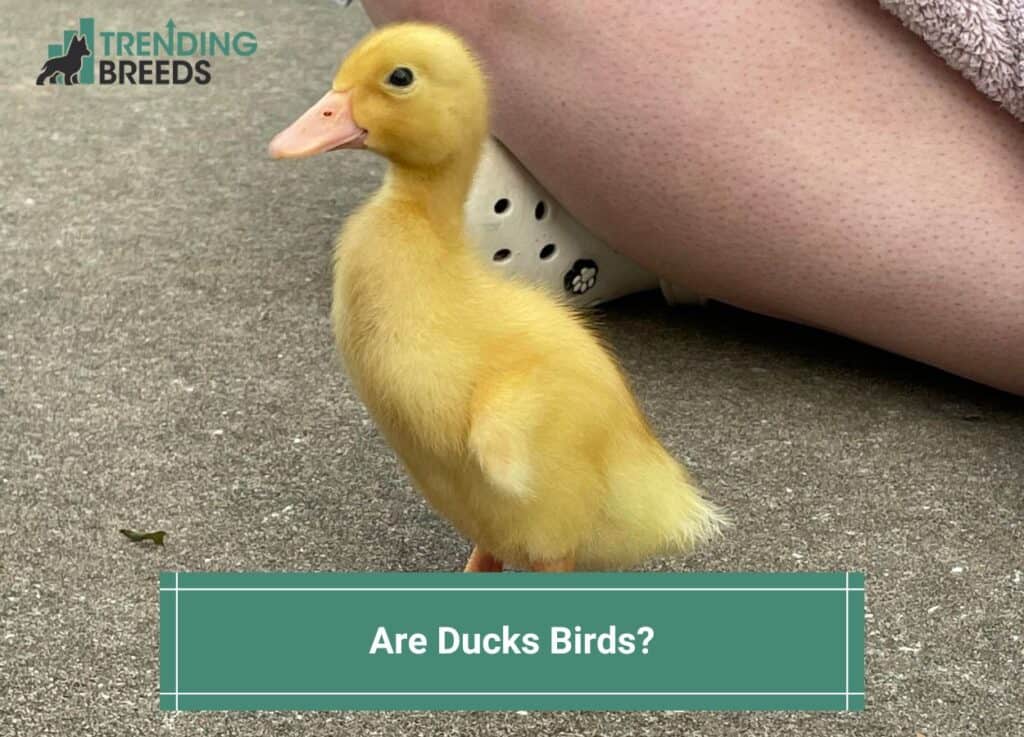
Are ducks birds? Compared to their cousins, swans and geese, ducks are smaller birds with shorter necks. In biology, they are part of the Anatidae family alongside their longer-necked cousins.
Economically and culturally, humans are interconnected with members of this family. Feathers, eggs, and meat have been exploited from ducks in particular.
Before you scroll further down this guide, check out these other animal-related articles: Are Cane Corsos Hypoallergenic? and Are Belgian Malinois Aggressive?.
Table of Contents
Are Ducks Birds?
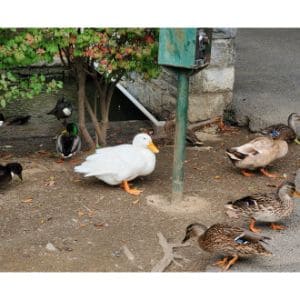
Ducks are also waterfowl, which means they enjoy being near fresh water, like lakes and streams. Geese and swans are bigger cousins to ducks, but ducks are smaller.
The webbed feet of ducks enable them to swim. As well as paddling in the water, they can also waddle on land.
Duck feet lack nerves or blood vessels, which makes them able to swim in cold water without feeling the cold. Ducks’ feathers are soaked in water, so you wouldn’t think they could do much.
Their feathers, however, are waterproof, because a gland near their tail produces oil that is spread throughout their body. Oil means the feather does not get wet and can stay in the water comfortably.
Swans and geese also fall in the family Anatidae, which includes ducks.
This makes them neither mammals nor amphibians. Freshwater, as well as saltwater habitats, are abundant for ducks. That may be the cause of the confusion with amphibians.
What Are Ducks?
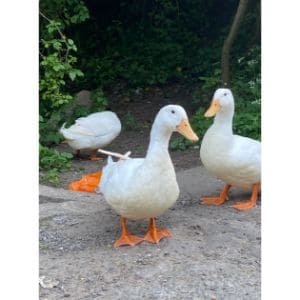
The duck is one type of bird. Except for Antarctica, ducks live near fresh and saltwater on every continent.
The wings of most duck species are short, strong, and pointed so they can use constant, fast strokes during the long winter migrations.
There are some ducks that cannot fly. Generally, domesticated ducks do not fly, especially those born in captivity and raised by humans.
Their environment provides plenty of food and shelter, and danger is minimal. There are also wild duck species that are unable to fly. One example is the Falkland steamer duck.
Diverse ducks and dabbling ducks make up the two categories of ducks. Ducks diving and scaups diving deep underwater in search of food are known as diving ducks and sea ducks.
A diving duck can be a merganser, bufflehead, eider, or scoter. The heavier they are, the better they stay underwater compared to their dabbling duck peers.
There is also a category of duck known as dabbling ducks. Their primary habitat is shallow water, where they feed by scooping up plants and insects with their heads underwater.
As well as hunting for aquatic plants and insects, dabbling ducks might feed on land. A dabbling duck is anything that dabbles, such as a mallard, a northern shoveler, an American wigeon, a gadwall, and a cinnamon teal.
There are many species of ducks whose habitats are as diverse as those of land and air. The webbed feet of ducks and their waterproof feathers make them excellent swimmers.
Ducks are specially designed with webbed feet for swimming. In addition to acting as paddles, ducks can handle cold water easily since their feet have no nerves or blood vessels.
Waterproof feathers also help ducks stay dry and warm during cold weather.
The glands that produce oil in ducks’ tails are called preen glands, like in many birds. To keep their feathers waterproof in the water, ducks distribute oil using their bills as they preen.
What Are The Different Kinds Of Ducks?
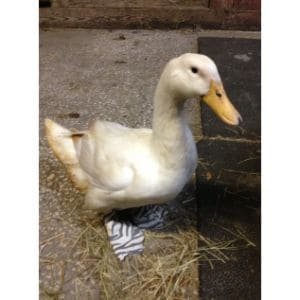
Ducks come in a wide variety of varieties. Here are a few of those types and how they are easily identified.
Dabblers
In addition to tipping their heads forward and eating, dabbler ducks have their tails held high and their faces underwater when feeding. The animals root through shallow water and mud, searching for plants and insects.
As well as nibbling on the surface of the water, these ducks are also known to feed on land.
Nevertheless, they rarely dive beneath the surface. There are several species of dabbling ducks, but most of them are mallards. Dabblers include northern pintails, American wigeons, and teals of different types.
Domestic Ducks
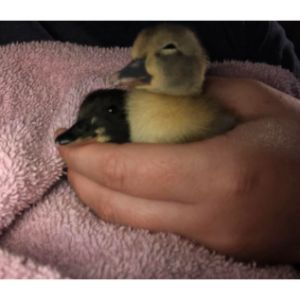
In spite of their common pet status, domestic ducks are not wild species but rather escapees from farms, gardens, and zoos.
Mixed flocks of these ducks frequent many urban and suburban ponds.
A high degree of hybridization has occurred with this duck due to its dark plumage, a wide range of sizes, and mottled colors. As a result of overbreeding in urban areas, flocks are often culled.
Divers
Fish, bugs, and plants are among their food sources, which they hunt beneath the water’s surface. It is difficult for these ducks to be maneuvered on land as they spend most of their time in the water.
As well as taking flight above the water’s surface, the birds must accelerate. Redheads, tufted ducks, canvasbacks, goldeneyes, and scaups are all ducks that dive.
Eiders
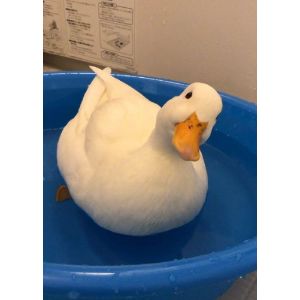
Scoters and eiders are included in the category of marine ducks. It is in habitats that are located very far north that sea ducks of these types live.
It is well known that eiders have lush down that is exceptional at insulating against extreme weather conditions.
The feathers of these birds were once heavily hunted. A common eider is a subspecies of the spectacled eider, Steller’s eider, and the king eider.
Perching Duck
Ducks are often seen perching in wet woodlands in the tropics. Nests are set in tree holes, where they perch high on branches, which gives them their name.
Their long claw-like toes make it easier for them to perch. Aquatic animals, larvae, snails, crabs, and snail eggs are favorites of ducks that perch.
Ducks with perching wings have bright colors and black linings on their wings. In the same way that dabbling ducks are larger and more colorful than hens, drakes are also larger and more colorful.
Stifftails
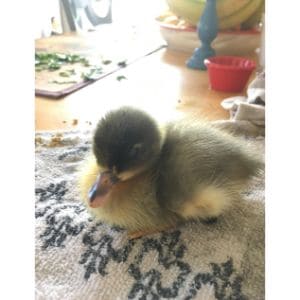
They use their stiff tips as steering mechanisms while swimming, as they are also aptly named diving ducks. Additionally, males may display their tails at an angle or vertically in territorial or breeding displays.
The bills of these ducks are usually colorful, and their bodies are compact. In addition to ruddy ducks and masked ducks, the blue-billed duck is also a stifftail species.
Whistling Ducks
Due to their tall legs and long necks, they often mistakenly appear as small geese. The call can be heard from long distances, so they are called shrill whistling birds.
They are often mistaken for other animals and birds because of their shrill whistling calls. Black-bellied whistling ducks, fulvous whistling ducks, and white whistling ducks are some of the different types of these ducks.
Why Is a Duck a Bird?
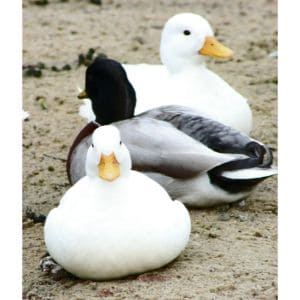
Generally, ducks have wide, strong webbed feet that make them good swimmers and divers.
Despite their lack of agility, it is common for birds to possess strong talons that help them grasp slippery rocks and branches on both land and water.
There are a variety of colors for ducks’ legs, such as yellow, orange, pink, and red.
While swimming, ducks conserve body heat thanks to their compact bodies. Land animals tend to have long, slender legs, but their legs become powerful when swimming or diving.
Ducks are usually oval, although they can be slender, plump, or nearly round.
The compact body of a duck enables it to swim efficiently and retain heat in the water. These creatures are ungainly on land due to their long back legs, but they are very effective at swimming and diving.
Most ducks have oval bodies, but their proportions can range from slim to plump and almost round.
In addition to being called ducks, waterfowls are also called waterbirds. Ponds, streams, and rivers are where they usually live.
With the right care and the right species, ducks can live for 20 years. The role of daylight in egg production cannot be overstated.
Can Ducks Fly?
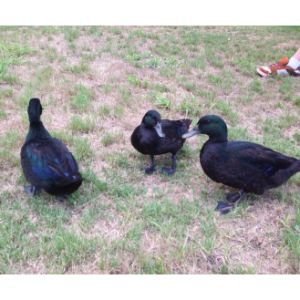
Flying or gliding abilities of ducks depend on their breed. Unlike domesticated ducks, wild ducks can fly. Fly with feathered friends and discover what their capabilities are.
Most waterfowl fly at less than 50 mph, but they can reach speeds of 60 mph. For instance, a mallard can travel many miles in eight hours.
Red-breasted merganser reached a maximum speed of 80 miles per hour during a flight next to an airplane.
Teal species with blue wings or green wings are among the slower species. Ducks of this species reach speeds of 30 miles per hour, among the slowest.
The grand passage is sometimes used by ducks to migrate in large groups. As well as traveling in large groups, ducks also travel in smaller groups.
The black brant is one of the few ducks that fly non-stop during migration. As they migrate from Alaska to Baja, California, these waterfowl travel a great deal during winter.
In less than 72 hours, the ducks completed the 3,000-mile trip. Migration involves most ducks traveling 750 miles.
Frequently Asked Questions
Do ducks lay eggs or not?
Ducks usually lay eggs in batches of 20.
Can you eat a duck egg?
A duck egg should be thoroughly cooked before being consumed.
Where do ducks go at night?
Most ducks sleep on the water, floating.
If you find this guide, “Are Ducks Birds,” informative and helpful, you can check out these other animal-related articles from our team:
- Are Flushable Wipes Safe for Your Dog?
- Are Blue Heelers Good With Other Dogs?
- Are Rottweilers Good Guard Dogs?
You can learn more about ducks by watching “Top 10 Amazing Facts About Ducks” down below:




